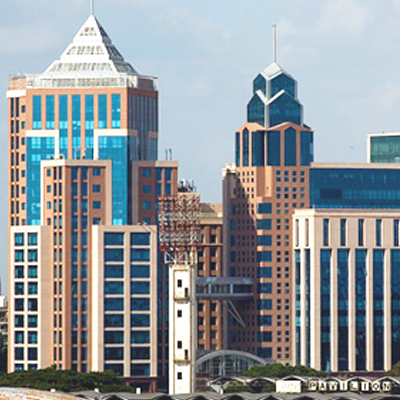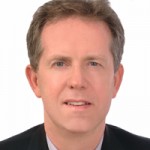I moved to New York City in June 1984. The previous summer was spent in Bihar, India, just below Nepal. Bihar at that time was the size of Nebraska with 100 million people. The ratio of Hindus and Muslims to Christians was 100,000 to 1.
In an interesting sort of way, Bihar prepared me for New York City. My hometown in rural South Dakota had 600 people. Within fifty miles of Times Square in New York City more than 20 million people live, or one out of every three hundred people on the planet.
What I have experienced living in New York City is a microcosm of what has been happening around the world – rural people have become urban. The Global South has migrated to the Global North in astonishing numbers.
The Phenomenon of Global Cities
Tim Keller, founder of Redeemer Presbyterian Church in Manhattan, has argued that the great global cities of the world (New York City, London, Tokyo, Hong Kong) have more influence over the world than do many nation states.
Not only is there huge population density, but there is also enormous financial, spiritual, and cultural influence. Richard Florida writes, “In the United States, more than 90% of all economic output is produced in metropolitan regions, while just the largest five metro regions account for 23% of it.”[1] Florida continues, “On a global scale, the world economy is driven largely by forty metropolitan mega regions. The top ten mega regions, home to just 6.5% of the world’s population, produce 43% of the world’s economic output.”[2] Florida comments on New York City, “Remarkably, the economic output of a highly developed megacity like New York eclipses the entire economic output of developing countries like Mexico and India.”[3]
Shifting Populations
It is estimated that by 2050 more than 70% of the global population will be urban. Ray Bakke in one of his lectures indicated that roughly 16 million people a year, or half the population of Canada, are migrating from rural China to urban China every year.[4]
The 2010 report by the Center for the Study of Global Christianity indicates that 859 million people from 327 people groups were living in Diaspora or 12.5% of the global population. Where is the Diaspora going? They are going to the cities.
There are two remarkable features of this global shift – it is significantly Christian (47.5%) and the top three receiving countries are the United States, India, and Colombia. Nearly 40% of the United States is from the Diaspora. Urban America is a primary beneficiary of the Global Diaspora movement.[5]
In my Flushing, Queens, neighborhood, more than one hundred languages are spoken. In one decade, the 1980s, the community went from being 10% Asian to 50% Asian. The nations have moved into the neighborhood.
Why Is This Happening and Why Is This Significant?
For many people groups the word opportunity is spelled C I T Y. As a near majority of the world’s people are living on less than US$2 a day, the city promises the hope of a better life. Cities are the locus of better employment, better education, and a better future.
The speed of urbanization is startling – five million people a month are moving into sizable cities, a new San Francisco every month:[6]
- The bad news is that the Christian mission of the church is simply not keeping up. Many of our city centers are less than 5% Christian, even in the ‘Christian’ West.
- The good news is that this urbanization seems to be a work of God. In God’s promise to Abraham in Genesis 12 to “bless all the nations of the earth”, the nations are all within walking distance of many Christians living in urban centers. In my Flushing neighborhood every major world religion is represented within a ten minute walk. This is something that has presumably not happened before in world history.
Immigrants are open to new ideas and new ways of looking at things:
- One estimate is that 80% of the Buddhists moving into New York City are spiritually open.
- The most spiritually receptive Jewish group in the world is in Brooklyn.
- Five of the nine most populated Muslim counties in America are in Metro New York City.
What Will Happen Next and Why?
What happens next will depend entirely on the spiritual trajectory of the next generation. A survey taken in 1998 among the Jewish, Muslim, Hindu, and Buddhist communities of New York City showed that they all had one thing in common: every major world religion (including the Christians) was losing their youth. The ‘winner’ was secularism.
This is a daunting reality in many immigrant churches – as many as 90% of young people growing up in immigrant churches never to come back upon high school graduation.
The mandate for the church in the urban world is to identify and invest in emerging spiritual leaders from the entire ethnic spectrum – and to envision the next generation to plant themselves in the most influentially strategic cities in the world. Cities like Dubai, Singapore, and Miami are emerging as gateway cities to the Latin world, Middle East, and Asia. Young professionals need to be envisioned to plant themselves in these strategic places.
The longer term outlook will depend on our personal and organizational agility to grasp these realities and adjust accordingly. All of our denominations and agencies need to have a clear grasp of the ramifications for our global strategies to impact global cities.
What Should We Do?
Let me propose four action steps:
- Study – study a great city of the world to understand its history, demography, and current spiritual reality.
- Network – connect with agencies and practitioners who share a common heart beat for the great cities and join the emerging urban practitioner network.
- Invest – find a place to invest in an emerging leader/agency in a global city.
- Pray – pray for laborers into perhaps the most strategic and opportune mission field in world history.
Endnotes
- Um, Stephen and Buzzard, Justin. Why Cities Matter. (Wheaton: Crossway, 2013), p. 29.
- Ibid.
- Ibid.
- Bakke, Ray. Bakke Graduate Lecture, Faith bible Church, Flushing, NY, June 2008.
- Bellofatto, Gina A. “On The Move,” Lausanne Global Analysis, November 2012, pp 16-17.
- Keller, Tim. Half Time Lecture, Redeemer Presbyterian Church, New York, New York, June 2011.

